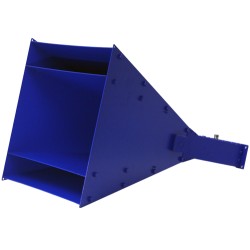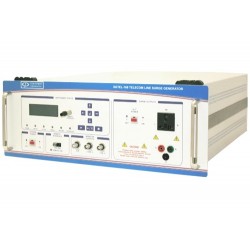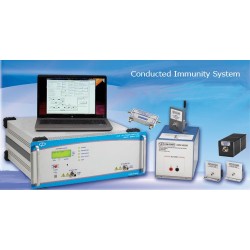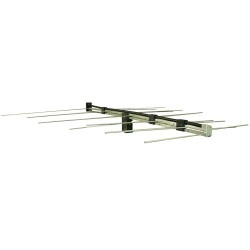Send Enquiry For Com-Power AH-8055 Horn Antenna 800 MHz - 5.5 GHz

Com-Power AH-8055 Horn Antenna 800 MHz - 5.5 GHz
- Frequency Range: 800 MHz to 5.5 GHz
- High Power Handling
- Transmit or receive capability
Com-Power is a leading manufacturer of test and measurement instrumentation for electromagnetic compatibility testing (EMC). The EMC Shop has partnered with Com-Power to stock and distribute new, used and rental EMC test equipment from Com-Power.
Subcategories
The EMC Shop stocks many Com-Power antennas and are available for rental or purchase new or used. Com-Power EMI / EMC broadband and tuned antennas cover the frequency range of 9 kHz - 40 GHz. Most electronic products are required meet the various international EMC regulatory standards before they are introduced to the market. Com-Power provides a wide range of EMI antennas and accessories. We also have the capabilities to assist you with custom EMC antennas for special applications to meet your exact needs.
LISN stands for 'Line Impedance Stabilization Network'. Com-Power offers a line of LISNs developed for conducted emission testing according to the most commonly adopted EMC specifications like CISPR, FCC, ISO, EN, RTCA DO-160 and MIL-STD 461D. The LISN circuit is designed and constructed to meet the performance criteria given by these standards.
Com-Power CDNs (Coupling/Decoupling Networks) are primarily used for RF conducted immunity testing per IEC 61000-4-6, which is one of the EMC (electromagnetic compatibility) phenomenon tests typically required for “CE-mark” compliance testing of commercial products.
The EMC Shop stocks calibrated CDN's for rental or sale.
Com-Power broadband high gain preamplifiers were designed for electromagnetic interference (EMI) testing and certification. EMC test labs use preamplifiers to improve sensitivity of the test system during EMI radiated emissions measurements. Without a high gain preamplifier, signals picked by the antenna that have amplitudes below the noise floor of the test system cannot be measured. The preamplifier gain has minimum variations for the entire operating frequency range for accurate emissions measurements. The Com-Power preamplifiers were primarily intended for EMC applications. However, it can be used for other applications that require signal amplification.
Com-Power Absorbing Clamps to measure EMI Emissions according to CISPR 13 [EN 55013], CISPR 14 [EN 55014] and CISPR 32 [EN 55032]
The absorbing clamps also known as ferrite clamps are used for measuring disturbance power on power input lines as well as other auxiliary I/O lines. The absorbing clamp measurement method (ACMM) is described in Clause 7 of CISPR 16-2-2.
Com-Power RF Current probes are used in EMC Testing for RF current measurements, there are two types of RF current measurements made with these current probes which are simply clamped on to the cables under test, that’s why there are also refer to “clamp on current probes”.
Com-Power near field probes have nice, compact nylon tips that allows for access into small circuitry and narrow down location of source interference to within the centimeter. The EMC Shop stocks these Com-Power near-field probe sets for rental or sale. Near-field magnetic (H-field) and electric (E-field) probes let you "sniff" around the circuits, cables, and enclosures to find the source. H-field probes use a conductive loop to detect magnetic fields produced by clock signals, serial data streams, control signals, and switching power supplies. You can often uncover the source of EMI emissions with near-field probes.
Protect your spectrum analyzer input during conducted emissions testing with a Com-Power transient limiter.
The following products can be used during EMC conducted emissions testing to protect the input of a spectrum analyzer. Combined in both the LIT-153 and LIT-930 Transient Limiters are a low-pass filter, high pass filter, transient suppressors and two separate 5 dB impedance matching attenuation pads; one at the input and one at the output.




